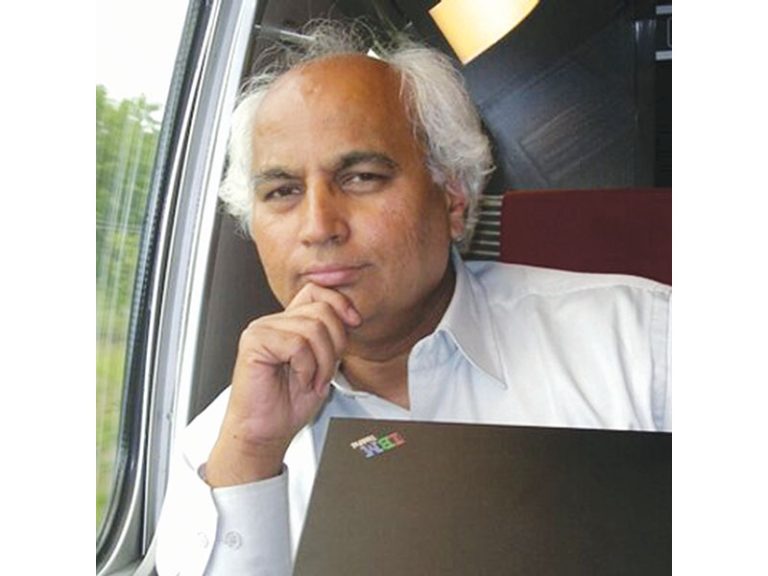Liberty, equality & fraternity must begin in common preschools
Sudheendra Kulkarni is a former aide of prime minister Atal Bihari Vajpayee (1999-2004) and currently founder, Forum for a New South Asia
Only a fraction of the 180 million in the age group of 0-5 years have access to good quality, well-equipped pre-schools. If this divide continues how can India remain faithful to the ideals of liberty, equality and fraternity?
I recently visited my hometown Athani in north Karnataka. It is no longer the quiet and poor taluka town it was when I did my schooling there more than five decades ago. The roads are teeming with cars. The rich have built ornate homes. There are stores galore selling branded clothes, shoes and jewellery. This new face of the town seems to indicate India is well on its way to becoming the world’s third largest economy.
I also visited a balwadi in one of Athani’s narrow bylanes, where underprivileged families send their kids for pre-school learning. Suddenly, a contrasting reality presented itself. Two tiny rooms without any ventilation. Bare walls with nothing on them to stimulate children’s imagination. No space for them to play, or even to move about freely. These are mostly children of daily wage workers, housemaids and security guards serving in the glittering shops of the market. Their parents cannot afford the better-run play-schools where doctors, lawyers, rich merchants, government officers and local politicians send their children.
Athani is not an exception. You will see the two socially polarising types of pre-schools in most of India’s 6,562 taluka towns, and slums of large cities. The country’s 1.6 million Anganwadi Centres (AWCs) established by the Central government mostly in rural areas, are no better either. These AWCs are essentially nutrition centres for pregnant and lactating mothers and children below six years to whom they also provide rudimentary pre-primary education. But who goes there? You will rarely see the rural rich sending their children to sit next to kids of their servants in an anganwadi.
Besides constraints of space and insufficient materials for playful learning, balwadis are also under-staffed. Their teachers are grossly under-paid. They have no formal training to prepare children under their care, typically between the ages of 3-5, to enter the portals of formal schooling. The problem of ill-trained teachers continues in government-run primary and secondary schools. It is even more marked in expensive private ‘English-medium schools’ that have sprung up in large numbers in villages, taluka towns and urban slums in every state of India. No wonder, the Annual Status of Education Report (ASER) shows, year after year, why an alarmingly large number of children from these schools have poor learning outcomes in basic math, reading and writing. Clearly, cognitive deficiency among underprivileged children is a pedagogical and political rather than a biological or medical problem.
Educationists and neuroscientists worldwide are unanimous that birth-to-six years are the most critical foundational period for the cognitive and emotional development of human beings. If this foundation is weak, the edifice of society cannot be strong. Indeed, social segregation hinders balanced psycho-intellectual development of even rich children. Many of them, when they grow up with little physical, cultural and emotional contact with their poor counterparts, begin to believe that privilege is their entitlement. They exhibit strong aversion to the value of egalitarianism.
India has about 180 million children in the age group of 0-5 years — that is, 13 percent of the total population. Only a small fraction of them have access to good quality, well-equipped pre-schools. If this divide continues, how can India remain faithful to the ideals of Justice, Liberty, Equality, Fraternity, and Dignity of the Individual which are enshrined in the Preamble of our Constitution? How can even the unity and integrity of the nation, another preambular principle, be guaranteed?
Against this backdrop here are five suggestions to provide quality ECCE for all, especially those lagging behind. First, the Central and state governments must show requisite political will, that must translate into sufficient financial support to augment every community’s own resources to upgrade the infrastructure of every single balwadi/AWC in the country. Second, to become a more harmonious society, we must summon commitment to class, caste, religious and gender equality. Specifically, we should encourage common pre-schools for all. We should also find more innovative ways to minimise social segregation among children.
Third, adequate space must be reserved for pre-schools (also for schools) in town and city planning blueprints. Fourth, parental education must be made an integral part of ECCE, since parents are the first and most important teachers of children. Fifth, the quality of ECCE is only as good as the quality of teachers. Therefore, continuous teacher training and re-training to enhance their knowledge, pedagogical skills and self-motivation should be given highest priority. We now have powerful digital media to realise this purpose. Gradually, we should elevate the importance of ECCE to such a high level that a pre-school teacher has the same social prestige as a university professor.
Our political, societal and business leaders don’t seem to be aware of the critical importance of scientifically guided and professionally administered ECCE. But it is an essential precondition for Viksit Bharat (developed India) and a $30 trillion GDP economy before the centenary of our independence in 2047.
Also read: How AI is Revolutionizing ECCE to Build a Strong Foundation for Future Success


















Add comment